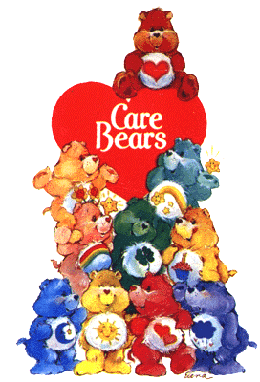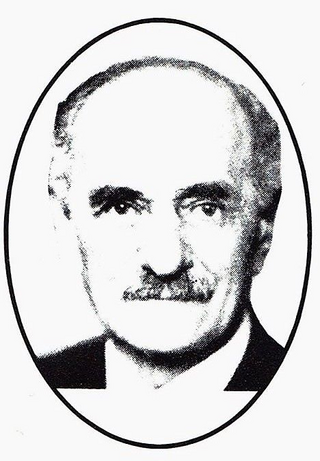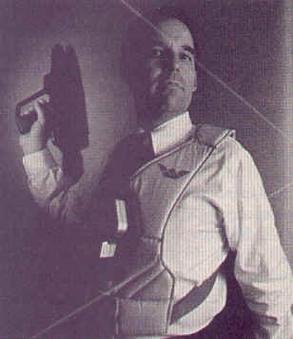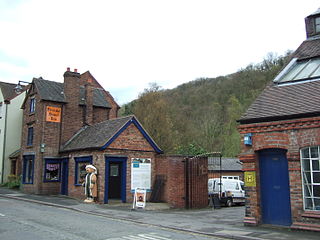Related Research Articles

A teddy bear is a stuffed toy in the form of a bear. Developed apparently simultaneously by toymakers Morris Michtom in the U.S. and Richard Steiff under his aunt Margarete Steiff's company in Germany in the early 20th century, the teddy bear, named after President Theodore Roosevelt, became a popular children's toy and has been celebrated in story, song, and film.

A stuffed toy is a toy doll with an outer fabric sewn from a textile and stuffed with flexible material. They are known by many names, such as plush toys, plushies, stuffed animals, and stuffies; in Britain and Australia, they may also be called soft toys or cuddly toys. The stuffed toy originated from the Steiff company of Germany in the late 19th century and gained popularity following the creation of the teddy bear in the United States in 1903. At the same time, German toy inventor Richard Steiff designed a similar bear. In 1903, Peter Rabbit was the first fictional character to be made into a patented stuffed toy. In 1921, Christopher Robin's stuffed toy, given to him by his father, A. A. Milne, would inspire the creation of Winnie-the-Pooh. In the 1970s, London-based Hamleys, the world's oldest toy store, bought the rights to Paddington Bear stuffed toys. In the 1990s, Ty Warner created Beanie Babies, a series of animals stuffed with plastic pellets that were popular as collector's items.
Kenner Products, known simply as Kenner, was an American toy company founded in 1946. Throughout its history, the Kenner brand produced several highly recognizable toys and merchandise lines including action figures like the original series of Star Wars, Jurassic Park and Batman as well as die cast models. The company was closed and merged by its corporate parent Hasbro in 2000.

Care Bears are multi-colored bears, painted in 1981 by artist Elena Kucharik to be used on greeting cards from American Greetings. They were turned into plush teddy bears and featured in The Care Bears in the Land Without Feelings (1983) and The Care Bears Battle the Freeze Machine (1984) before headlining their own television series called Care Bears from 1985 to 1988. They also had multiple feature films including: The Care Bears Movie (1985), Care Bears Movie II: A New Generation (1986), and The Care Bears Adventure in Wonderland (1987).

Steiff is a German-based plush toy company, founded in 1880, with headquarters in Giengen, Germany. The company claims to have made the world's first factory-made teddy bear.

Morris Michtom was a Russian-born businessman and inventor who, with his wife Rose, also a Russian Jewish immigrant who lived in Brooklyn, came up with the idea for the teddy bear in 1902 around the same time as Richard Steiff in Germany. They founded the Ideal Novelty and Toy Company which, after Michtom's death, became the largest doll-making company in the United States.

Worlds of Wonder (WoW) was an American toy company founded in 1985 by former Atari sales president Don Kingsborough, and former Atari employee Mark Robert Goldberg. Its founding was inspired by a prototype that became its launch product, Teddy Ruxpin. In 1986, it launched Lazer Tag and filed an IPO which Fortune magazine called "one of the year's most sought after stock sales". WoW partnered with the young Nintendo of America as retail sales distributor, crucial to the landmark launch and rise of the Nintendo Entertainment System from 1986 to 1987.

Merrythought is a toy manufacturing company established in 1930 in the United Kingdom. The company specialises in soft toys, especially teddy bears. Merrythought has handmade traditional teddy bears in the World Heritage Site of Ironbridge, Shropshire, UK since 1930.

Ideal Toy Company was an American toy company founded by Morris Michtom and his wife, Rose. During the post–World War II baby boom era, Ideal became the largest doll-making company in the United States. Their most popular dolls included Betsy Wetsy, Toni, Saucy Walker, Shirley Temple, Miss Revlon, Patti Playpal, Tammy, Thumbelina, Tiny Thumbelina, and Crissy. The company is also known for selling the Rubik's Cube.

Art toys, also called designer toys, are toys and collectibles created by artists and designers that are either self-produced or made by small, independent toy companies, typically in very limited editions. Artists use a variety of materials, such as ABS plastic, vinyl, wood, metal, latex, plush, and resin. Creators often have backgrounds in graphic design, illustration, or fine art, but many accomplished toy artists are self-taught. The first art toys appeared in the 1990s in Hong Kong and Japan. By the early 2000s, the majority of art toys were based upon characters created by popular Lowbrow artists, linking the two movements.
Boyds Bears is a line of manufactured collectable resin and stuffed teddy bears produced from the early 1980s until 2014. Boyds was acquired in 2008 by Enesco, who announced in 2014 that the company had "made the difficult strategic decision to place Boyds into hibernation".

Gund is a Canadian-owned manufacturer of plush stuffed animals. The company is based in Edison, New Jersey, and distributes throughout the United States and Canada as well as in Europe, Japan, Australia, and South America. Gund is currently run by third generation family owner Bruce Raiffe whose grandfather Jacob Swedlin purchased the company from the original founder in 1925. Their slogan is “Gotta Getta Gund”.
Ganz Midwest-CBK LLC is a Canadian soft toy and home décor company, famous for its plush animals and collectibles. They are the manufacturer of Webkinz, a toy with an interactive virtual-reality Internet site for children.
Richard Steiff was a German designer, known for creating one of the first teddy bears. In 1897, he joined Steiff, a stuffed toy company founded in his hometown Giengen by his aunt Margarete Steiff, and became integral to its growth as a global toy company.
Coffee Bean Bears are a coffee bean stuffed bear created by brothers Christopher Esposito and Artie Esposito in 2003 through their company ESPO Entertainment. The initial assortment of bears featured four characters: Brewster Bean, Frenchie Vanilla, Mister Mocha, and Hazel "The Nut". Each of the bears is stuffed, in its midsection only, with organically grown, roasted coffee beans of the appropriate flavor. The rest of the bear is filled with polyester stuffing.

Margarete Steiff was a German seamstress who in 1880 founded Margarete Steiff GmbH, more widely known as Steiff, a maker of toy stuffed animals.
Me to You Bears is the brand name of a collection of teddy bears made by the Carte Blanche Greetings Ltd. They are often found in Clinton Cards. They were first created in 1987 and appeared in their current guise in 1995. A number of products are available related to Tatty Teddy including plush toys, figurines, cards, mugs, and wedding accessories.

Palisades Entertainment, LLC, better known as Palisades Toys, was an American manufacturing and distributing toy & collectibles company geared toward the adult collector market. Established in 1994, the company generally worked within the same vein as competitors such as McFarlane Toys and NECA, producing detailed action figures, statues, plushes, and other collectibles of licensed properties up until its bankruptcy in 2006. Palisades also developed the brand Factory X which continues under Limited by CAS Inc.

R. John Wright Dolls is an art doll making workshop located in Bennington, Vermont. Established in 1976, R. John Wright Dolls (RJW) is a privately held company founded by R. John Wright.
For the German actress and singer, see Renate Müller.
References
- "Bären Aus Plüsch: Seit knapp 20 Jahren behaupten sich die Hermann Teddys aus dem Hirschaid auch bei Sammlern". Bayerische Staatszeitung (in German). Munich: Verlag Bayerische Staatszeitung. 16 January 2004.
- Cockrill, Pauline (1993). The Teddy Bear Encyclopedia. London: Dorling Kindersley. p. 240. ISBN 1-56458-302-3.
- Froese, Wolfgang; Daniel Hentschel (2008). Das große Teddy-Hermann-Buch (in German). Duisburg: Verlag Puppen & Spielzeug. p. 152. ISBN 978-3-87463-415-1.
- Mullins, Linda (1991). Teddy Bears: Past & Present. Vol. 2. Cumberland: Hobby House Press. pp. 255. ISBN 0-87588-384-2.
- Pistorius, Rolf; Christel Pistorius (1994). Tales of Teddy Hermann. Weingarten: Weingarten. p. 96. ISBN 3-8170-1015-X.